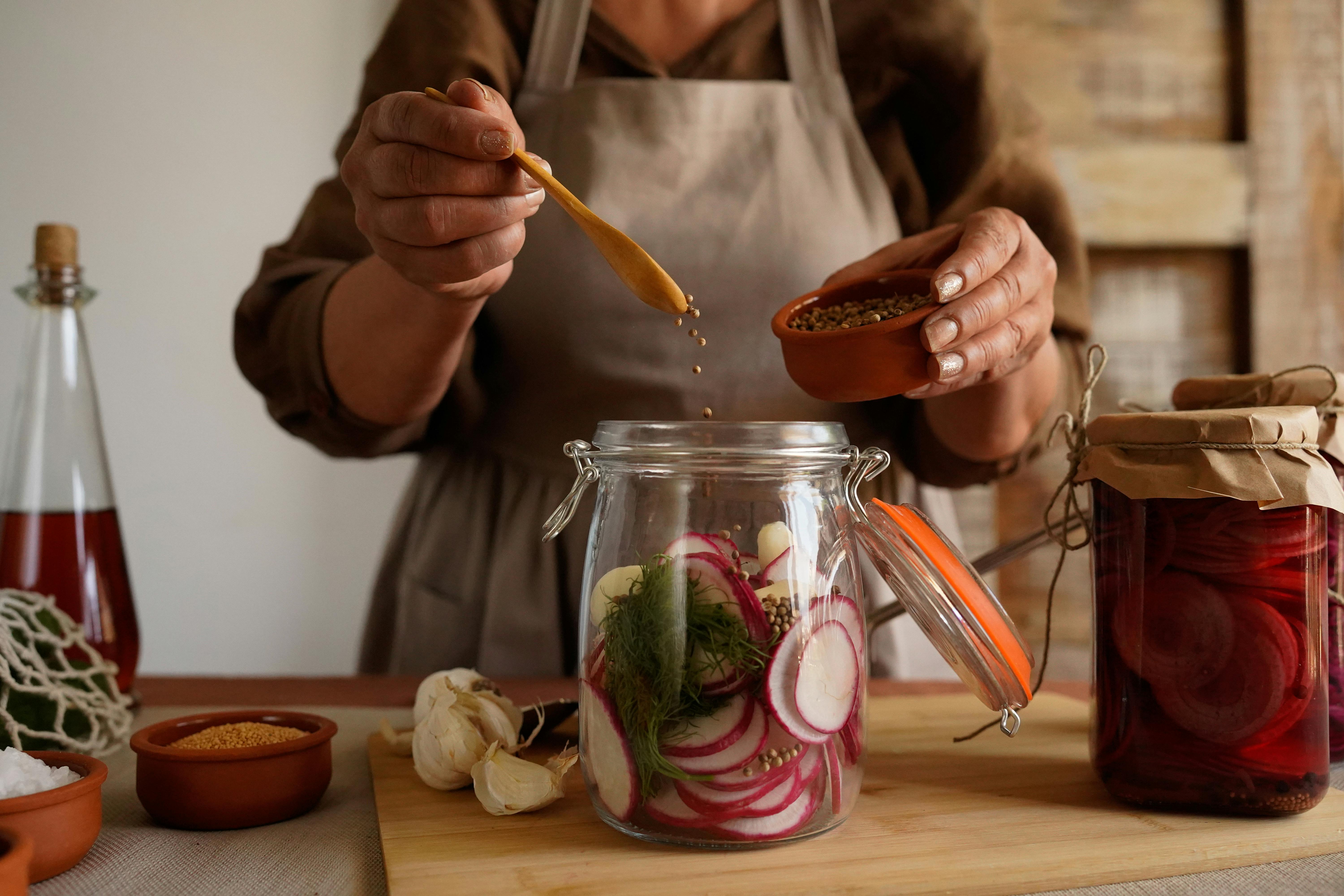Global Pantry Tricks to Reimagine Leftovers
Transforming last night’s dinner into a fresh, exciting meal can save time, reduce waste, and expand your flavor repertoire. This article shares practical pantry-based techniques—drawing on global methods like fermentation and pickling—so you can turn leftovers into satisfying new dishes while supporting sustainability and efficient mealprep.

Leftovers rarely need to remain familiar to be delicious. With a few pantry staples, simple preservation tricks, and a willingness to mix global flavor principles, you can turn yesterday’s meal into something that feels new. Using batchcooking, smart seasoning, and low-effort techniques like quick pickles or fermented condiments, leftover ingredients gain texture and taste while helping reduce waste and save time in the kitchen.
How can leftovers become new meals?
Leftovers become new by changing format, texture, and seasoning. Transforming roasted vegetables into a spiced fritter, shredding protein for tacos, or turning grain bowls into soups are quick ways to refresh components. For example, a plate of roasted chicken and vegetables can be diced, tossed with a vinaigrette, warmed briefly, and served over greens. The key is to adjust moisture (add a sauce or broth), introduce contrasting textures (crunchy toppings or toasted nuts), and use bold seasoning to shift the palate. Timesaving strategies include repurposing cooked grains into patties or blending stews into silky sauces for pasta.
What pantry staples help in mealprep?
Pantry essentials for reimagining leftovers include canned tomatoes, vinegar, soy sauce or tamari, shelf-stable oils, dried beans or lentils, and long-lasting grains like rice, barley, or couscous. Spices such as smoked paprika, cumin, coriander, and chili flakes stretch flavor options. Stocking versatile condiments—mustard, miso paste, fish sauce—allows quick umami boosts. These items support batchcooking and simple preservation techniques: a jar of pickled vegetables brightens sandwiches, while a spoonful of miso transforms broth into a ramen-style soup. Organizing staples into an accessible pantry zone speeds up mealprep and improvisation.
How does fermentation add flavoring and preservation?
Fermentation is a time-tested method that deepens flavor and extends shelf life through natural preservation. Simple ferments like quick sauerkraut, lacto-fermented carrots, or small batches of kimchi can be made with minimal equipment and used as vibrant toppings for bowls, sandwiches, and salads. Fermented condiments—such as yogurt-based sauces, chutneys, or garum-style anchovy ferments—introduce complexity and acidity that elevate leftovers. Fermentation also supports sustainability by preventing spoilage: slightly soft produce can become continuing ingredients rather than compost. For home cooks, short fermentation periods (a few days to a couple of weeks) yield approachable results with notable flavor enhancement.
How can pickling extend shelf life and variety?
Pickling preserves and adds brightness to leftover components. Quick pickles made with vinegar, water, salt, and sugar can turn raw or cooked vegetables into tangy additions within hours. Pickled onions, cucumbers, or peppers are excellent for cutting through rich or fatty leftovers, while brined eggs or pickled citrus zest add surprising accents. Pickling is a zerowaste technique because it uses small amounts of produce that might otherwise be discarded. Keep a jar of quick pickles in the fridge to instantly refresh tacos, grain bowls, sandwiches, and protein plates, transforming them into new meals with minimal effort.
What spices and seasoning transform leftovers?
Spices and seasoning alter perception of familiar foods. A sprinkle of toasted seeds, a ground spice blend, or a drizzle of chili oil can reposition a leftover base into another cuisine’s profile. For example, a Mediterranean roast can shift toward Indian flavors with a quick spice tempering of cumin, turmeric, and garam masala; add yogurt and lemon to finish. Global seasoning ideas—za’atar, berbere, dukkah, or Chinese five-spice—are small investments that yield large flavor returns. Layering fresh herbs, citrus zest, or a finishing salt increases complexity and signals a new dish to the diner.
How to combine batchcooking with timesaving zero-waste strategies?
Batchcooking supports efficiency and sustainable habits by producing multipurpose components that can be recombined through the week. Cook a large pot of grains, roast a tray of mixed vegetables, and prepare a protein—then plan three to five different meals using those building blocks. Preserve extras through freezing, pickling, or quick fermentation to extend usability. Emphasize flexible recipes: a big batch of tomato sauce becomes shakshuka, pasta sauce, or a base for soup. Label containers with dates and intended uses to streamline mealprep. These habits reduce food waste, save time, and encourage experimentation with global flavoring techniques.
Conclusion Reimagining leftovers is both a creative exercise and a practical response to modern kitchen demands. By keeping a well-stocked pantry, experimenting with fermentation and pickling, and using spices and batchcooking thoughtfully, leftover ingredients can become diverse, satisfying meals while promoting sustainability and timesaving routines. Small adjustments—new textures, bold seasoning, acid finishes—make familiar items feel new and useful across global culinary traditions.





